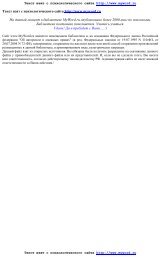Comets and the Origin and Evolution of Life
Comets and the Origin and Evolution of Life
Comets and the Origin and Evolution of Life
Create successful ePaper yourself
Turn your PDF publications into a flip-book with our unique Google optimized e-Paper software.
32 A. Delsemme<br />
happened during that “lost interval,” we must leave geophysics <strong>and</strong> look at<br />
<strong>the</strong> astronomical evidence about <strong>the</strong> origin <strong>of</strong> <strong>the</strong> Solar System<br />
2.2.2 The <strong>Origin</strong> <strong>of</strong> <strong>the</strong> Solar System<br />
Laplace (1796) is <strong>the</strong> first who tried to solve <strong>the</strong> problem <strong>of</strong> <strong>the</strong> origin <strong>of</strong> <strong>the</strong><br />
Solar System by using observational facts. In <strong>the</strong> last pages <strong>of</strong> his “Exposition<br />
du Système du Monde,” he lists first all <strong>the</strong> quasi-regularities <strong>of</strong> <strong>the</strong> Solar System,<br />
<strong>and</strong> <strong>the</strong>n proposes that originally, a “fluid <strong>of</strong> immense extent enveloped<br />
<strong>the</strong> Sun as an atmosphere,” whose primeval rotation enforced all those quasiregularities.<br />
For a long time however, 19th-century astronomers believed that<br />
Laplace’s model was wrong, because <strong>the</strong> Sun turned much too slowly to result<br />
from <strong>the</strong> central agglomeration <strong>of</strong> this “Solar Nebula” (dubbed this way by a<br />
false analogy with what we now call spiral galaxies).<br />
The problem <strong>of</strong> <strong>the</strong> present angular momentum <strong>of</strong> <strong>the</strong> Sun disappeared,<br />
when <strong>the</strong> solar wind was discovered. Its spiral motion away from <strong>the</strong> Sun<br />
produces a magnetic brake that slows <strong>the</strong> solar rotation continuously. The<br />
apparent contradiction with a very fast primeval rotation had disappeared,<br />
<strong>and</strong> Laplace’s hypo<strong>the</strong>sis came back in favor some 50 years ago. However, it<br />
still was a speculative scenario difficult to analyze numerically. For instance,<br />
von Weiszäcker (1944) proposed to arrange <strong>the</strong> gas eddies in epicycles in<br />
order to explain <strong>the</strong> distances <strong>of</strong> <strong>the</strong> planets (Bode’s law). Soon, his analysis<br />
was shown to be in quantitative disagreement with fluid mechanics, but it<br />
attracted <strong>the</strong> attention on a possible mechanism that had been neglected so<br />
far: viscous turbulence can dissipate energy <strong>and</strong> redistribute momentum in<br />
<strong>the</strong> primitive nebula.<br />
To make a long story short, <strong>the</strong> basic <strong>the</strong>ory <strong>of</strong> <strong>the</strong> viscous accretion disk<br />
has been given by Lynden-Bell <strong>and</strong> Pringle (1974). Numerical models have<br />
been developed, in particular by Cameron (1985), Lin <strong>and</strong> Papaloisou (1985),<br />
Wood <strong>and</strong> Morfill (1988), Morfill (1988), <strong>and</strong> Morfill <strong>and</strong> Wood (1989). There<br />
are still some difficulties with <strong>the</strong> model. For instance, <strong>the</strong> origin <strong>of</strong> <strong>the</strong> ra<strong>the</strong>r<br />
high viscosity needed to dissipate <strong>the</strong> angular momentum has not been properly<br />
clarified, although its most likely source is a strong convection driven by<br />
gas turbulence. Gas turbulence in <strong>the</strong> disk is itself maintained by <strong>the</strong> gravitational<br />
collapse <strong>of</strong> <strong>the</strong> interstellar cloud that feeds <strong>the</strong> disk. However, <strong>the</strong>re are<br />
o<strong>the</strong>r possible mechanisms. A gravitational torque (Larson, 1984) could also<br />
dissipate angular momentum. Such a gravitational torque could be introduced<br />
by a spiral structure in <strong>the</strong> disk, or in general by mass distributions that are<br />
not axisymmetrical. If <strong>the</strong> gas is ionized enough, magnetic forces could also<br />
play an important role, as <strong>the</strong> action <strong>of</strong> <strong>the</strong> solar wind on <strong>the</strong> present Sun<br />
demonstrates. After all, <strong>the</strong> solar wind could still be <strong>the</strong> subsiding remnant<br />
<strong>of</strong> <strong>the</strong> mechanism involved in <strong>the</strong> shedding <strong>of</strong> <strong>the</strong> disk 5 billion years ago.



